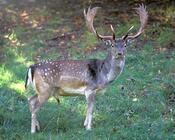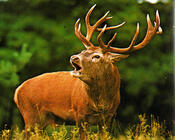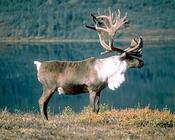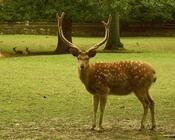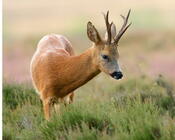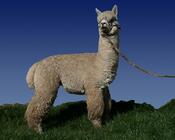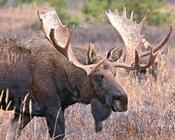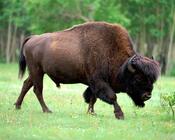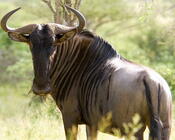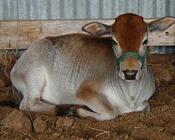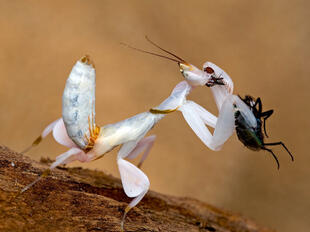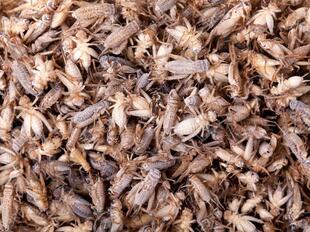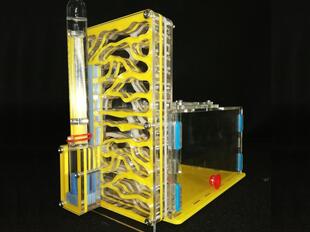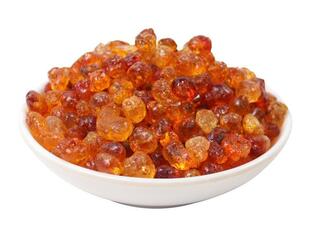Appearance
The peculiarity of most ungulates is the development of their horns as a means of protection from predators and as a tournament weapon. Animals belonging to different branches of the"tree" of ungulates have different structures. The body consists of the head, neck, trunk, forelimbs, hind legs, and tail. On the head of mammals are located the oral cavity and the organs of vision, hearing, smell and taste.
The size of ungulates ranges from small to very large (elephants).
Distribution
Groups of ungulates unite more than 90 genera of animals distributed on all continents except Antarctica. They were introduced to New Zealand and Australia by humans as livestock. Some species of ungulates (sirens) live in the seas off the coast of continents and Islands.
Diet
These animals feed mainly on plant food, some are omnivores, such as pigs.
Reproduction
Males and females usually differ in size, color, and behavior. By the nature of reproduction, all ungulates` descendants are active from the very beginning and quickly grow up. In the litter, they usually have 1-2 young, they are born fully formed and are able to follow their mother within a few hours after birth.
In captivity
The lifespan of ungulates varies significantly depending on the species.
The most effective way to keep ungulates is semi-intensive. Its essence is the alternation of finding livestock in individual and group pens at different periods throughout the year. So in individual pens can be male producers during the rut (and individual males-constantly), females in the late prenatal, birth and initial period of feeding, young animals on artificial feeding. Being in pens of small areas, animals get used to the constant presence of humans and stop reacting negatively to people in general. They adapt to the daily routine, which reduces stress and generally has a positive effect on reproduction.
When transferred to adaptation pens of a large area, animals go wild, especially if they can see an example of their wilder relatives, even other species.
Hay comprises the bulk of the diet for most ungulates in captivity and should be available for most of the day rather than fed at intervals as meals. Hay should be leafy and green, free of mold, dirt, excess weeds, and other foreign matter, and should not be overmature. Care should be taken so that hay contains no toxic chemicals, poisonous plants, traces of pests, or fungi, and is stored away from excessive heat.
Precautions should be taken if feeding silage products. If the silage was not processed or stored properly or contaminated by animal or meat products, it may contain fungi or bacteria that can produce lethal toxins.
Browse consists of leaves, bark, and branches of edible trees and shrubs. Animals the eat browse consume mostly the leaves. Browse can be cut during the growing season and then fed directly. In temperate areas, browse should be stored for winter and spring feeding. Browse can be stored dried, frozen, or as silage. Obtaining browse from a commercial provider is preferred. Appropriate species to feed are alder (black and grey), ash, aspen, bamboo, birch, blackberry, elm (field, wych),grapevine, hazel, hornbeam, lime, maple, hawthorn, nettle, plane tree, poplar (black), rose (dog), and willow, but not sycamore. Flowers and seeds from all browse species should not be fed unless it is known that they are safe.
In addition to hay, a pelleted diet that contains protein, minerals, and vitamins in concentrations adequate to meet the needs of domestic species and those wild species for which data are available should be offered. Depending on the nutritional status of the animal, ~0.5–1.5 kg should be fed per animal. Overfeeding can result in obesity.
Hay should be fed from a rack rather than off the ground for most species (elephants are an exception). Hay racks should be located at eye level for tall browsers such as giraffes and gerenuks. Pellets can be offered from a covered trough or (rubber) feed pans. Regularly feeding the pelleted diet in an animal’s holding area can facilitate close observation and easy capture. If possible, animals should be fed separately to ensure that each individual receives a similar amount of food. If feeding separately is not possible, at least two widely separated feeding stations may be necessary to reduce conflict and to ensure that subordinate animals obtain their share of food. Most ungulates should have a lick stone containing salt, vitamins, and minerals in their facility.
In addition to hay and pelleted diet, assorted fruits and vegetables often are fed to exotic ungulates. For most species, these items usually are not necessary except as an occasional treat; the amount should be limited to <5% of the total diet. The exception might be for those species that regularly feed on fruits and succulents in the wild.
 Russian
Russian
 English
English




















